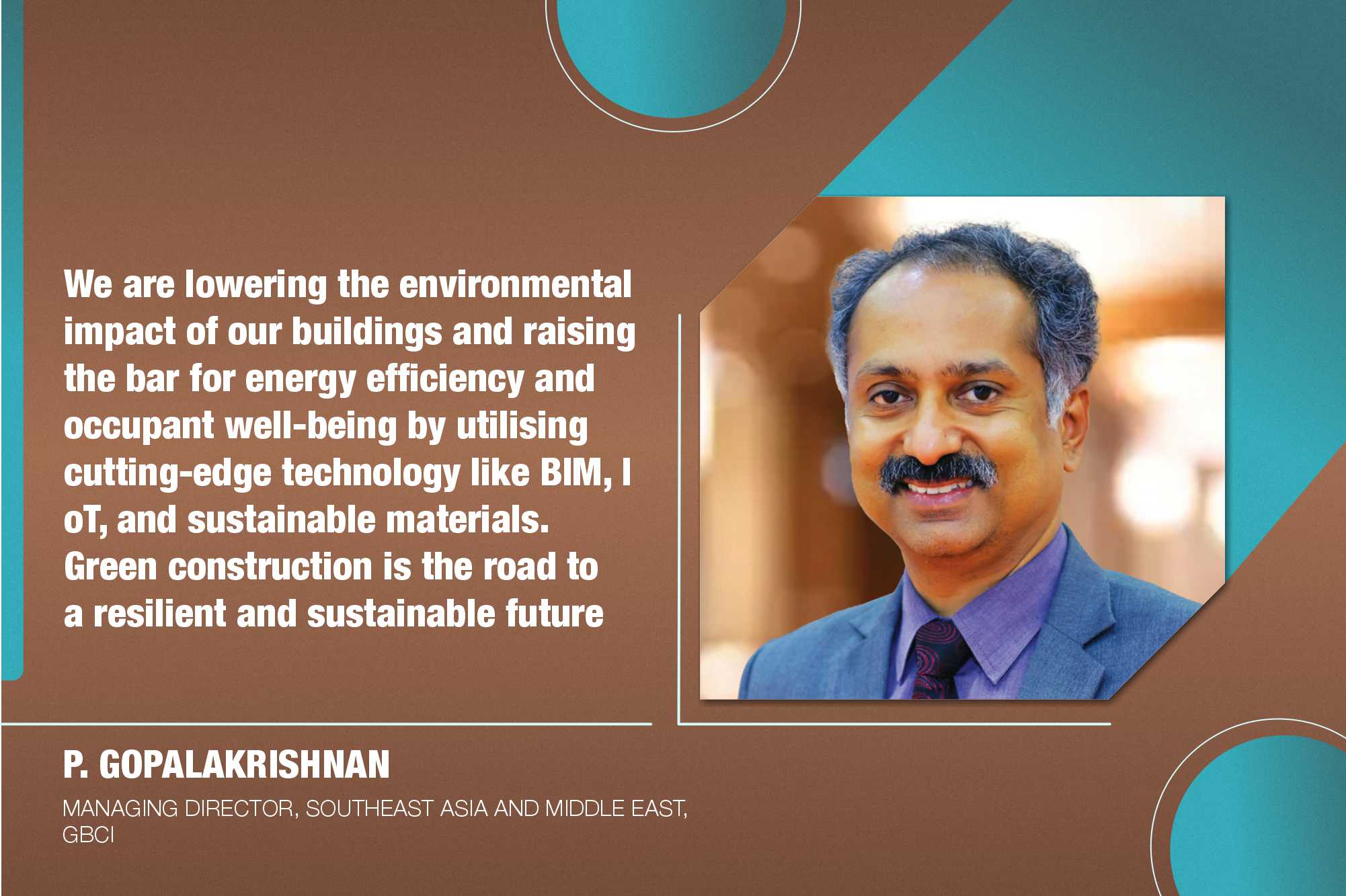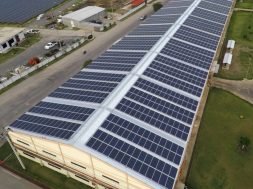Sustainability ideas from GBCI

We are lowering the environmental impact of our buildings and raising the bar for energy efficiency and occupant well-being by utilising cutting-edge technology like BIM, IoT, and sustainable materials. Green construction is the road to a resilient and sustainable future.” P. GopalaKrishnan, Managing Director, Southeast Asia and Middle East, GBCI
Environmental concerns are at the forefront of sustainability, which is receiving great respect in the modern world. As a result, eco-conscious methods driven by innovation and technology are becoming more prevalent in the building business. “Green construction,” which integrates eco-friendly practices throughout a building’s lifecycle, from design and construction to operation and renovation, has become more popular due to the growing demand for environmentally conscious practices. Green construction aims to minimise environmental impact and maximise energy efficiency.
Green building techniques are being advanced by a number of technological advancements, making it possible to design structures that blend in with the environment and support a sustainable future.
Technology’s Place in Green Buildings By facilitating careful planning, smooth communication, and effective project monitoring, construction management software and Building Information Modelling (BIM) is transforming the construction sector, improving sustainability and lowering environmental impact.

The Internet of Things (IoT) improves safety and quality control on building sites by tracking equipment usage, optimising energy management, and monitoring environmental conditions. Furthermore, 3D printing as a waste-free and resource-efficient building technique is investigated.
Digital metres and submetres provide precise monitoring and management by providing comprehensive energy and water usage data. Continuous submetering systems enable buildings to save a lot of money, which improves decision-making and advances sustainability objectives.
Sensors for CO2 and volatile organic compounds (VOCs) monitor the quality of the air indoors, enabling ventilation systems to maintain a hygienic interior atmosphere. Improved air quality can also improve tenant well-being and comply with green building health and environmental regulations, enabling higher LEED certification levels.
Environmentally Friendly Building Materials and Their Effects Reclaimed wood, bamboo, recycled steel, and bio-based plastics are examples of sustainable materials that are becoming increasingly popular. By creating healthier living environments, these materials positively impact the environment and enhance the quality of life for building inhabitants.
Using cutting-edge insulation materials and passive design techniques lowers energy usage and boosts thermal comfort, augmenting the overall sustainability and energy efficiency of green construction projects.
Standards for Certification and Government Incentives Green building techniques are becoming increasingly popular, driven by certifications like LEED (Leadership in Energy and Environmental Design). These certifications ensure buildings minimise environmental effects while encouraging occupant health and well-being. They concentrate on energy efficiency, water conservation, interior environmental quality, and materials utilised.
Advanced technology facilitates the certification process by providing precise reports on building performance and guaranteeing conformity with sustainability standards like LEED. The growing emphasis on ESG indicators ensures transparency and accountability for stakeholders and investors.
Government incentives like tax breaks, grants, and subsidies, which make it more financially feasible for developers to use sustainable methods, hasten the adoption of green construction, particularly in tier-II and tier-III cities. The construction industry can move towards a more sustainable future by combining advanced technology with supportive government policies.
For more details, Visit : https://www.gbci.org/
Cookie Consent
We use cookies to personalize your experience. By continuing to visit this website you agree to our Terms & Conditions, Privacy Policy and Cookie Policy.










